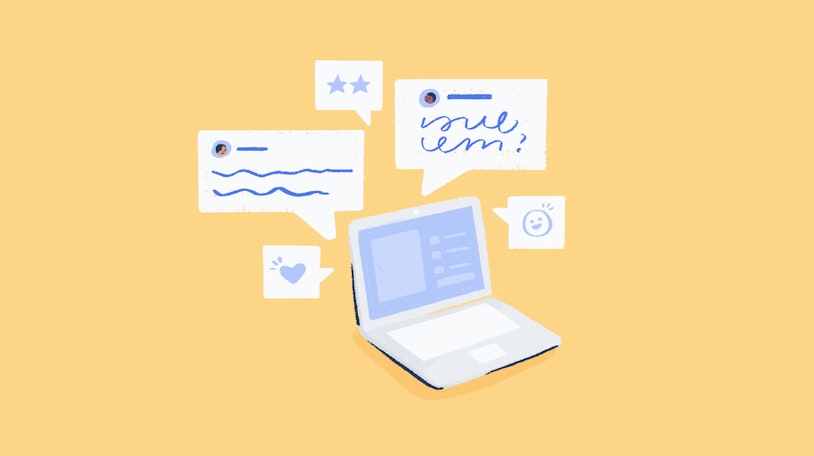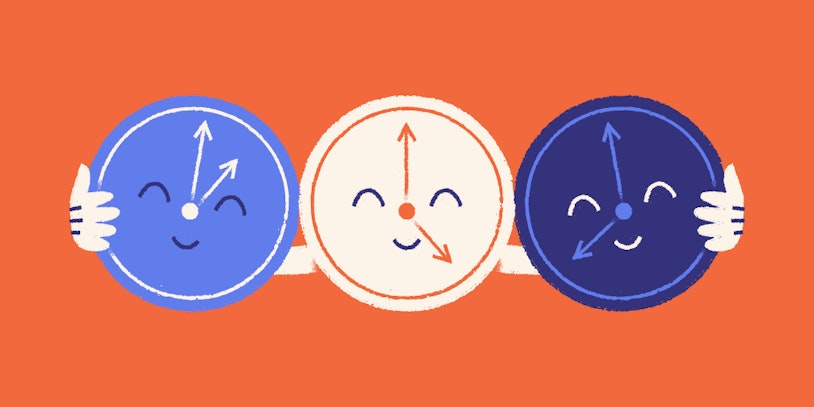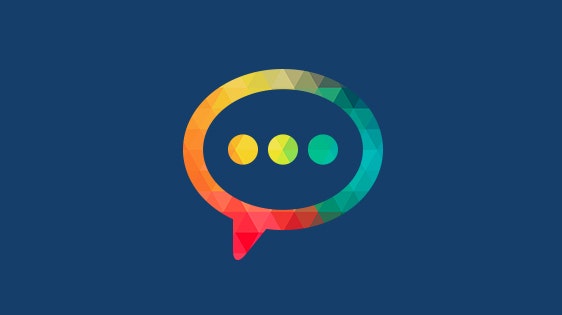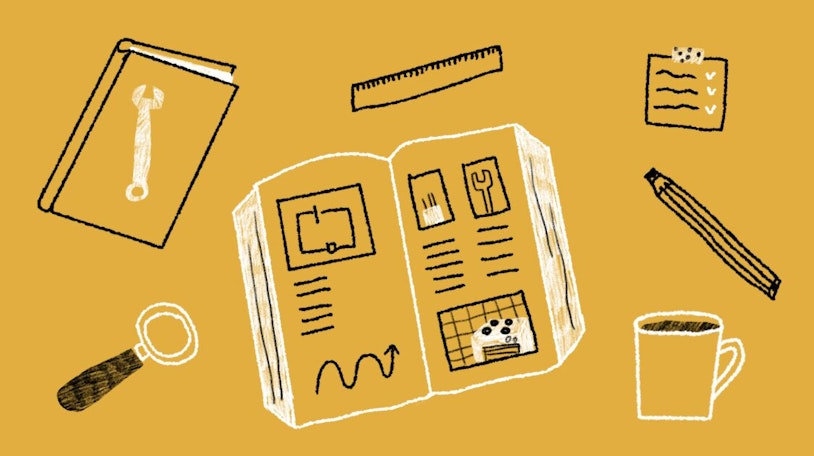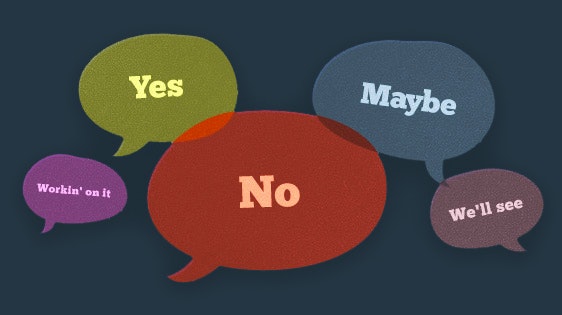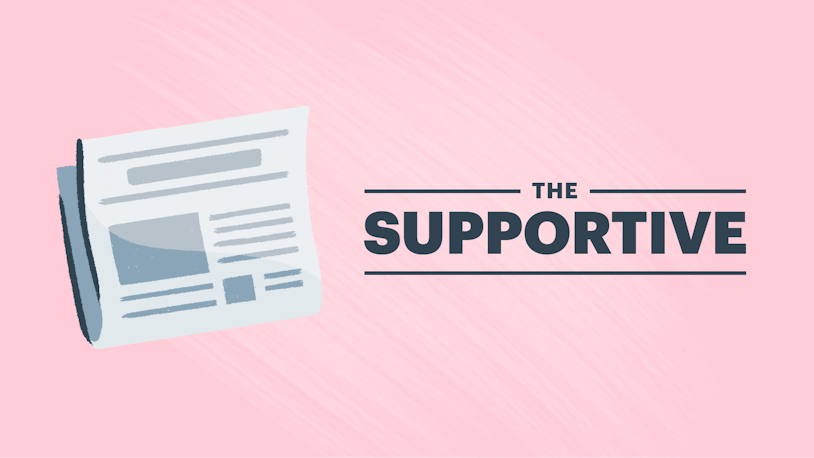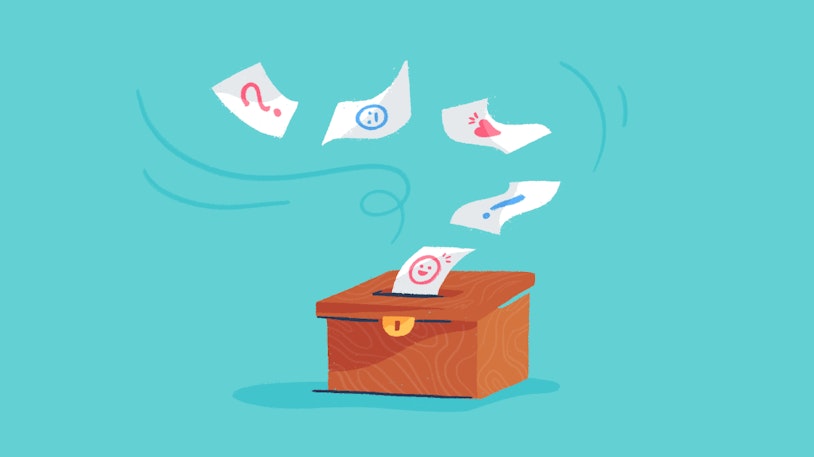As a customer support manager, you probably have a love/hate relationship with canned responses.
You love them because, true to their name, having a pre-packaged response to a customer's query saves your agents time, provides them a safety net of sorts (especially if they're new to your team), and ensures that your customers receive consistent and accurate information that matches your brand's voice.
But you also hate them, because we've all gotten bad canned responses that sounded stilted and robotic, didn't quite answer our question, or that the agent obviously used without personalizing at all. I know I'm not the only person who's ever received a message that said "Hello, {{requester.first_name}}! How can I help you today?"
Let’s talk about how your support team can get canned live chat responses right — with dozens of examples to illustrate.
This is a chapter in our Ultimate Guide to Live Chat Support. When you're ready, check out the other chapters:
Chapter 1 – Live Chat Support 101: Definition, Benefits, and Best Practices
Chapter 2 – Key Live Chat Statistics for Customer Service Teams
Chapter 3 – How to Implement Live Chat With a Small Support Team
Chapter 4 – The Big Benefits of Live Chat for Customer Service Teams
Chapter 5 – Important Live Chat Tips for Email Support Pros
Chapter 6 – 101 Best Live Chat Response Examples for Customer Service
Chapter 7 – The Best Live Chat Tools for Customer Support
Chapter 8 – 5 Reasons Why Every Ecommerce Store Needs Live Chat
Chapter 9 – Live Chat Best Practices and Common Mistakes
Chapter 10 – Why Contextual Support is Critical to Live Chat
Chapter 11 – Why You Don’t Need an AI Support Chatbot
Chapter 12 – Actionable Live Chat Metrics to Start Tracking Today
Best practices for crafting canned live chat responses
Canned responses are undeniably useful for both customer service agents and customers.
This is especially true when used in live chat support.
More customers prefer live chat over any other support channel because chat support tools are accessible and easy to use, and they provide real-time support options for customers to ask questions and resolve issues.
Because of its fast, real-time nature, live chat is more conversational than other channels. Providing live chat support is more akin to phone support than other text-based channels, like email and social media.
That’s why it's crucial that your canned responses balance efficiency with empathy. They need to enable efficiency but still come across as warm, friendly, and genuinely helpful. Below you'll see that we've offered a plethora of live chat scripts to cover a variety of common customer service scenarios. They're meant to provide inspiration, ideas, and actionable wordings so that you're not starting from scratch.
While inspiration and examples are great — feel free to steal any of the examples below — we also want to help you feel comfortable crafting your own canned responses. To that end, here are some best practices for making your canned responses sound as natural and human as if you were chatting with your customers face to face:
Keep it short and simple. Live chat is fast-paced, and often customers are using mobile devices to speak with you, so long walls of text or requests for lots of info upfront can be off-putting. Be concise and keep questions limited to one idea or piece of information at a time.
Consider your brand voice and values. What does your company sound like as a whole? What are your company's values? Make sure your canned responses reflect your company's personality and how it wants to treat its customers.
Consider your audience. Live chat is usually pretty conversational, but software developers are going to be more open to things like technical terms and complicated troubleshooting than casual shoppers will be. Know your customers, and adjust your tone and style to accommodate their needs.
Give it a human touch. Make sure your agents understand how and when to personalize canned responses. This will likely take some coaching over time, but you can start with simpler canned responses and work your way to more customized ones as your agents gain confidence.
101 live chat canned response examples
We've divided up our canned response examples based on different customer service scenarios. As you’re checking them out, keep in mind that while some of these might be a perfect fit for you to start using right away, others may need tweaks and customizations to fit your company’s unique brand.
8 canned responses for when all agents are offline
Unless you offer 24/7 support, there’s a good chance you’ll have customers trying to start chats for support when your agents aren’t online. Your live chat tool may automatically refer these users to email support, but you’ll still want a personalized message to set expectations.
Here are some canned responses you can use to let customers know you’re offline and that you’ll be back:
Hi! We’re sorry, but all our agents are currently offline. Your inquiry is important to us, and we'll reply as soon as we're back at [time/date]. In the meantime, you can leave a message and we’ll make sure it gets to the right team.
Thanks for reaching out to us! Our team is currently unavailable, but we do want to help. Typically, we respond within [time frame] during our work hours, [online hours].
Hello there! Unfortunately, our live chat agents are currently unavailable. You can also reach us via email at [your email address] or visit our Help Center [insert link] for quick answers to common questions.
Hi! We're sorry for the inconvenience, but all our agents are offline at the moment. We appreciate your patience and understanding. Feel free to leave a message, and we'll be back to assist you soon!
Hi there! Our team is currently away, but we're eager to help. Let us know how we can help, and we'll get in touch with you as soon as we’re back.
Greetings! Our live chat team is currently offline, but you can find answers to many common questions in our Help Center [insert link]. If you still need help, please leave a message, and we'll get back to you.
Hello! Our live chat support is currently closed. You can also check out our social media channels [insert link] or community forums [insert link] for assistance from our community members and updates.
Thank you for getting in touch! Our live chat support team is offline, but if this is an urgent matter, please reach out to our emergency hotline at [emergency contact number]. For non-urgent inquiries, leave a message, and we'll respond as soon as we’re back.
7 live chat scripts for greetings, opening a chat, or welcoming back customers
Having kind, friendly, and welcoming opening responses will set the tone for the rest of your chat with a customer. You can also use live chat as a way to offer proactive support to customers (by asking if they need help before they reach out to you) and to show your appreciation to returning customers:
Hi, and thanks for reaching out to [company name]! How can we help you today?
Hi there! Thanks for reaching out to us, I’m happy to help.
Thanks for trying out [product/service]! Do you have any questions about it that I can answer for you?
Thanks for contacting [company name]! My name is [agent name]. How can I help you get started with [product]?
Great to hear from you again, [customer's name]! How can I help you today? Did you have any follow-up questions from our last conversation?
Hello! My name is [agent name], and I’m here to help if you need me.
Hi [customer’s name], I’m glad you’re back! Do you need help finishing [project/purchase]?
4 canned responses for setting expectations or sharing timelines and hold statuses
Because customers tend to come to live chat expecting faster response times and quicker fixes to their problems, setting and managing expectations is crucial for a good experience. Use these chat scripts to help customers understand what to expect:
Thanks for that information! This looks like it might be a more complex issue, and it may take a few extra minutes to research it. I really appreciate your patience while I look into it.
I appreciate your report of this bug! I’m going to take a few minutes to see if I can reproduce it, but I’ll be right back. Feel free to send me a message in the meantime if you think of anything else that might be helpful.
Thank you for explaining your problem! Let me go check with our [team name] about [issue]. It might take a bit, but I’ll check back with you every few minutes so you know the status.
I’m on hold with [other team], but they’re working on it! In the meantime, do you have any other questions that I can help you with? I can also share some more resources or follow up later if that’s better for you.
7 live chat canned responses for managing long wait times
Seasoned customer support agents know that long wait times are sometimes unavoidable, so it’s key to keep customers informed. This helps you minimize their frustration and salvage their experience with your company and product:
Hi, thanks so much for reaching out. It’s a holiday, so we have a smaller support team today and it might take a little longer to reply. We’ll be with you as soon as we can!
Hi there! To give you an idea of what to expect, our current estimated wait time for live chat is about [time frame]. We're working hard to help everyone as quickly as possible.
If you’d rather not wait, you can also reach us via email at [your email address] or visit our Help Center [insert link] for answers to common questions.
Hi! While you wait, you might find answers to your questions in our extensive Help Center [insert link].
Thanks so much for your patience! How can I help you?
Thank you for your patience. Our team is working hard, and someone will be with you in [estimated time].
Hi again, [customer name]! I’m sorry about that long wait, but I appreciate your understanding, and I’m here to help out. What can I do for you today?
4 canned responses for correcting team confusion or wrong company
It’s not unusual for customers to mix up companies or products and seek support from the wrong place. Here are a few suggestions for gracefully helping users find the help they’re looking for:
Hi there! We’re actually [company name] and we offer [service/product]. Are we who you were trying to contact?
Hello, [customer name]. We’re [company name]. It sounds like you’re trying to reach [different company] – is that right?
Greetings! I believe you might be trying to reach [different company]. Is there anything I can help you with regarding [your company name]? If not, I might be able to help you find the right contact information.
Hi, thanks so much for getting in touch with us! You’ve reached our [team name], but it sounds like you need [different team]. Would you like me to transfer you over to them?
3 chat canned responses for making sure you understand a customer’s issue
It’s important to fully understand a customer’s problem, both for resolving the issue appropriately and for making sure they feel heard. These are helpful canned responses for summarizing, confirming, and restating a customer’s problem in your own words to ensure you’re moving in the right direction:
Thanks for that information! Here are the notes I put together for our engineers, just to make sure I understand your problem correctly.
I appreciate you explaining that! Just to confirm, you're experiencing [briefly summarize the issue], correct?
Thanks for that summary. It sounds like you might be experiencing an issue with [problem/product] — is that right?
5 live chat scripts for asking for more information
Before you can begin an investigation, you usually need more information about a customer’s issue: more context, account or technical information, or visuals like screenshots. Asking for this information clearly and early will set a good rapport with the customer and reassure them that you’re capable of understanding their issue so that it can be solved:
Thanks so much for reporting this! Can you share more about what you were doing just before this problem occurred?
Thanks for letting us know you’re having trouble logging in. Can you share your username?
I’m sorry you’re having trouble with [product/service]! To help me better understand your situation, could you tell me [mention the specific information you need, e.g., your account number, error message, etc.]?
I appreciate you sharing that. To narrow down the issue, it would be helpful to know [mention the specific details you need, e.g., the order number, the browser they're using, etc.].
Thank you for that explanation! Can you share a screenshot or screen recording of what you’re seeing? A visual can help me understand what’s happening better so I can help you fix it.
3 canned responses for walking customers through general troubleshooting and workarounds
It can feel daunting to walk customers through troubleshooting or workarounds in live chat, but it can be done well! Chunking instructions, going at the customer’s pace, and frequently checking in with them about how they’re doing makes troubleshooting easier for both you and your customer:
That was a really helpful explanation. To resolve this issue, let's try a few troubleshooting steps together. Are you ready?
Now that we understand the problem, I have some steps we can take to troubleshoot it. Here’s the first step: [Provide detailed instructions]. Take your time, and let me know when you’re ready for the next step or if you have any trouble.
If these troubleshooting steps don't resolve the issue, don't worry; I’ll be here so we can try something else.
6 canned responses for when an issue has been fixed
When there’s a bug or outage happening, a good live chat experience means bringing a customer from their first report of the issue all the way through to a resolution. Often this means sharing any last steps for fixing the issue and confirming with the customer that their problem is fixed:
Hi [customer name], great news! It looks like we've resolved the issue you were having.
Our engineers just let me know the bug has been fixed. Can you let me know if the problem is solved on your end?
I’m so glad to hear that the problem is fixed! To ensure that it doesn’t happen again, you may want to [mention any recommended actions or best practices].
Thank you so much for letting me know the issue is resolved. Please let me know if it happens again or if you have any other questions about it.
I'm glad we could resolve this for you. If you ever need help in the future, feel free to start a chat with us any time.
We hope everything runs smoothly from here on out. If you ever have more questions or concerns, don't hesitate to reach out.
6 canned responses for recommending additional resources
Even when they reach out over chat, many customers prefer trying to answer questions for themselves or solving problems at their own pace, and they may only need someone to point them in the right direction for good information. If you’re using a chat tool like Beacon, you can set up different modes to tailor how your customers see self-service resources:
That’s a great question! You might want to check out our Help Center article titled “[article title and link].” It provides detailed information on [briefly describe the topic].
If you need step-by-step instructions, our comprehensive guide on “[guide title and link]” is an excellent resource.
For in-depth insights into [mention the topic], I suggest reading our latest blog post, “[blog post title and link].” It's a great source of information!
We have a video tutorial that walks you through how to do that. You can watch it here: [insert video link].
If you’d like tips and tricks or help from other users like yourself, our community forum is an active hub for discussions and solutions: [insert link].
After you've had a chance to explore the [recommended resource], please let me know if you have any more questions or need further clarification. I'd love to help!
4 live chat responses for product/tool comparisons
Customers often need help understanding the pros and cons of your product in comparison to another product, which is an area agents often find the most challenging (especially when there’s not a success or sales team to whom they can refer customers). These responses require some work on an agent’s part to build their product knowledge, but they’re great places to start when having these kinds of conversations with customers:
I'd be happy to assist you with [product/tool] comparisons. Could you please share which products or tools you'd like to compare?
I’m happy to help explain more about our product’s features compared to [other product]. While I’m not as much of an expert on [other product], our customers often say things like [customer feedback]. Is there anything specific you'd like to know more about?
To help you decide, let's look at the advantages of [product/tool A] and [product/tool B]. [List the advantages of each].
When you’re deciding between us and [other company], it's important to consider pricing as well. [Product/tool A] is priced at [price], while [product/tool B] costs [price]. Keep in mind any additional costs such as [mention any relevant costs].
3 canned responses for offering consultative upsells and cross-sells
Support professionals aren’t salespeople by trade or (often) by nature. We focus on making sure a customer can use the product they’re already paying for and are getting what they want out of it. But we should be comfortable with recommending subscription upgrades or additional products when it’s clear a customer would benefit from them. These canned responses help agents offer new products to customers in a way that’s helpful and customer-centric:
It looks like [recommended feature] would make it easier for you to do what you’re trying to do with our product. Your current plan doesn’t offer that feature, but [higher plan] does. Would you like more information about it?
Many of our customers who choose [product A] also find value in [product B]. It can help you meet [the goals they’ve shared with you]. Would you like more details?
In addition to [product A], have you explored our [product B]? It pairs well with [current product] and offers [list benefits]. Would you like to give it a try today?
3 canned responses for when a customer asks for a discount
Customers all have limited budgets. It can sometimes be awkward to field requests for a discount when one isn’t available, but canned responses help agents have those conversations in a positive and affirming way while offering more information about the value your product offers the customer:
Thanks for your interest in [product]! Let me check if we have any discounts available for it.
That’s a great question! We aren’t offering any discounts right now, but there are other ways for you to save. Would you like more information about our [loyalty program, refer-a-friend program, annual plan discount, etc.]?
I totally understand your questions about pricing. Our [product/service] is designed to provide exceptional value. Let me share some of the benefits and features that make them worthwhile.
5 canned responses for when you don’t know the answer to a question
It’s happened to all of us — the customer asks a fantastic question about an obscure part of the product, and we don’t know how to answer it. Then the pressure’s on to find the answer! As with any interaction, it’s important to communicate well and manage expectations. These canned responses will help your agents build trust with their customers while doing their due diligence:
I appreciate your question. Let me check to see if I can find the information you're looking for.
That’s a good question, and I’m actually not sure. I want to make sure I provide the most accurate answer, so is it OK if I take a few minutes to research it?
Researching your question may take a little time. Would it be okay if I follow up with the answer a little later, once I’ve tracked down that info?
I'm going to reach out to our [specific team] to gather the information you need. I'll aim to get back to you within [time frame].
Thanks for that great question — let me transfer you to someone who can give you the best information.
5 live chat response examples for transferring customers to another agent or channel or escalating their issue
There are going to be situations where you don’t have the knowledge or tools to answer a customer’s questions or to resolve their issue. When that happens, it’s imperative to keep the customer informed about what you’re doing and why:
It sounds like you’re experiencing a bug, so we’ll need an engineer’s help on this one. I’m going to share all the information you’ve given me and my own research with them. I’ll follow up with you in [amount of time] to let you know what the status is.
I believe that [other agent or team name] is better equipped to help you with that question. I'll connect you to them, but first, is there anything else you’d like me to pass on to them before I send you over?
It sounds like your issue is urgent, so I'm going to escalate it to our [other support team] to ensure it receives the attention it deserves.
I’d like to provide you with more detailed instructions. I recommend continuing this conversation via email; is that OK? If so, may I have your email address, please?
This might need a little more guided help to resolve, so I’d like to arrange a phone call. Can you share your phone number and a good time to call?
5 canned responses for giving or denying refunds
It’s always unfortunate when a product or service doesn’t work out for a customer and you need to provide a refund. It can be even more painful when a customer doesn’t qualify for a refund. Either way, these canned responses can help ease those difficult conversations for both agents and customers while still maintaining a good relationship:
I’m sorry our [product/service] didn’t work for you, and I’m happy to help you with a refund. Please provide me with your order number, and I'll start that process for you.
Thank you for bringing this to our attention! I want to make this right for you — can I refund you [partial or total amount of service/product]?
Thank you for sharing that information. I've reviewed your request, and unfortunately we’re not able to process a refund in this case due to our [specific refund policy or terms]. I'm here to help with any other questions or concerns you may have.
While I can’t offer a refund, I’d like to try to address your concerns as much as I can. Would you like a different/replacement [service or product], or would you be interested in a credit?
I know it’s disappointing that I can’t offer you a refund. Our refund policy is designed to ensure fairness and consistency for all customers. You can review the refund policy here [insert link] for more information on our guidelines, and I’m happy to answer any other questions you have.
3 canned responses for saying no to a customer’s request
It’s similarly awkward when a customer makes a request to which an agent must say no. These canned responses cover saying no gently, as well as how to offer alternatives when possible:
I’m sorry, I’m not able to do that because [reason/policy]. Is there anything else I can help you with?
While I can't fulfill your request as-is, I might be able to offer an alternative. How about [mention an alternative option that may work for the customer]?
I can't [repeat customer’s request and explain why], but is there anything else that might work for you?
6 canned responses for expressing empathy and apologizing to customers having a bad experience
One of the most important things you can do when a customer has had a bad experience is to acknowledge it, validate their feelings, and apologize for the experience. These canned responses will not only help your agents de-escalate the situation, but they will also help maintain your relationship with the customer:
I’m so sorry to hear about your experience — that sounds frustrating. I’ll do my best to fix this for you.
I can imagine how frustrating this situation must be for you. What can I do to resolve it for you?
I apologize, it looks like I gave you the wrong information. I’ve double-checked and have a better solution for you.
It looks like our company made a mistake when we [explain mistake and context]. Let me correct it now and see what we can do to make it up to you.
I know this was frustrating, so thank you very much for your patience and understanding while I work on correcting this for you.
You’ve been so kind and patient while I fixed this — thank you! Is there anything else I can do to help?
4 canned responses for dealing with abuse from customers
Unfortunately, sometimes customers are overwhelmed or feeling a lot of frustration, and you have to set boundaries for behavior. Agents should feel comfortable with kindly but firmly de-escalating customers, and macros help them do so in a way that they know you’ll approve of:
I’m happy to help you, but we need to maintain a respectful and courteous conversation in order for it to be productive.
I understand your frustration, but I want to emphasize that we can address your concerns more effectively if we maintain a respectful and constructive dialogue.
I want to remind you that our chat is recorded, and we have a zero-tolerance policy for abusive behavior. If you continue to use language like that, I’ll need to terminate this chat.
Abusive language or behavior is not tolerated in our chat. I want to help you, so let's work together to respectfully address your concerns.
4 canned responses for taking feedback about an interaction or experience
Soliciting customer feedback is always crucial and valuable for team and product growth, but especially after a customer has had a difficult experience (either with the product or an agent). These canned responses make it easier for agents to ask what they can do to improve a customer’s experience so they can leave the chat feeling valued:
Thanks so much for telling me about your experience with [product/service]. Do you have any thoughts or feedback that I can take back to our product team so they can improve it?
Thanks so much for your patience during this experience; I know it wasn’t the best. Is there anything I could have done differently to make it better?
I really appreciate your thoughts. We're particularly interested in your feedback regarding [mention a specific area, e.g., product quality, customer service]. How did we do in that respect?
Thank you for trusting me with that feedback. It’s immensely valuable, and I appreciate your willingness to help me grow.
6 canned responses for ending a chat
Ending a chat gracefully and positively is an art, and every agent will have their own style. These canned responses are a great jumping off point if they’re still getting a feel for closing out a customer conversation:
Before I go, I just wanted to make sure I answered all of your questions. Is there anything you’re not sure about?
Thanks for chatting with me today! Before I let you go, can you confirm that the problem is resolved?
I’ve really enjoyed working with you today. Please let me know if there’s anything else I can do to help!
It sounds like you’re all set, but if you have any other trouble, just reply to this chat and it will reopen. Have a great day!
Thanks for giving us the opportunity to fix this for you. If you have any other trouble or concerns, please let me know. Goodbye for now!
If you need any more support or have additional questions down the road, don't hesitate to reach back out. We're here whenever you need us. Bye!
Live chat responses make life easier for everyone
Although they may get a bad rap occasionally, it’s probably pretty clear that live chat response examples are useful across a wide range of customer service situations. When a customer responds poorly to a canned response, it’s often due to the way the response was used — like repetitively or at a bad time — not because the actual content of the response was lacking.
If you’re looking to improve the quality of your team’s live chat support, use these chat scripts wherever you see fit. And if you’d like to level up your chat tool to provide in-context help across your website, check out a free trial of Help Scout today.



